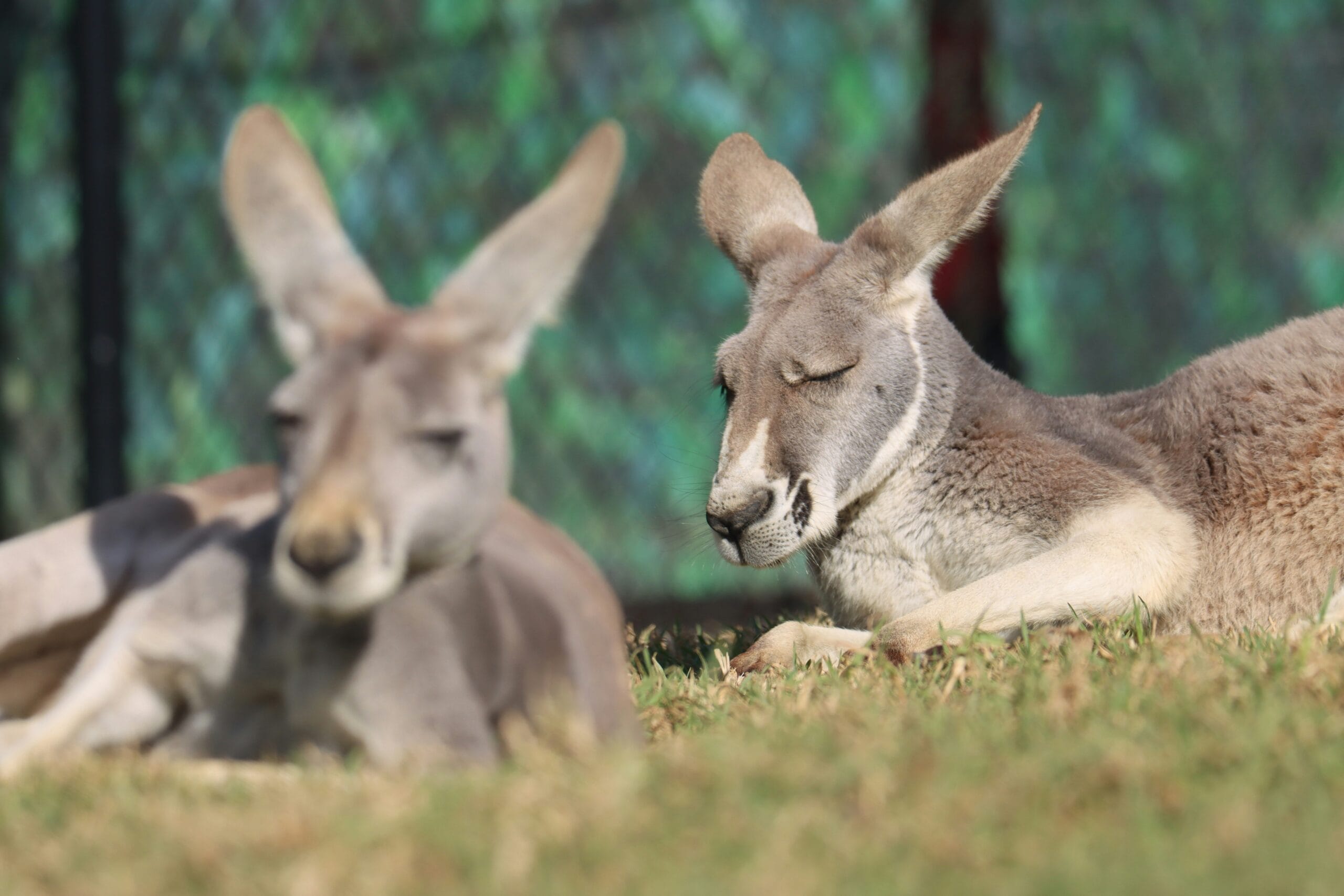Introduction to Metro Minnesota Zoos
Metro Minnesota is home to a diverse array of zoos that play an integral role in animal conservation, public education, and recreational opportunities for residents and visitors alike. These educational institutions not only provide a space for families to explore and enjoy, but they also foster a deeper understanding of wildlife and the environmental challenges faced by various species today. By showcasing a variety of animals from local ecosystems to exotic habitats, zoos contribute significantly to the awareness and appreciation of biodiversity.
Zoos in the Metro Minnesota area are dedicated to the principles of conservation, education, and recreation. They participate in breeding programs aimed at preserving endangered species while also providing a safe haven for animals that are unable to survive in the wild due to injury or habitat loss. These organizations work tirelessly alongside global conservation efforts, supporting initiatives designed to protect natural habitats and promote sustainable practices. Such engagement is vital as experiencing animals in a well-maintained environment can inspire visitors to take action in their own lives towards conservation efforts.
In addition to their conservation goals, the zoos serve as educational resources, offering programs and activities that engage individuals of all ages. From informative exhibits that highlight the unique characteristics of each species to interactive experiences such as behind-the-scenes tours or animal encounters, the educational potential of these facilities is significant. Schools often collaborate with local zoos to provide students with enriching field trips that complement their classroom learning.
Recreationally, the zoos provide a vibrant atmosphere where families can spend time together, enjoying not only the wildlife but also various amenities such as picnic areas, playgrounds, and seasonal events. As a crucial aspect of the local community, the zoos in Metro Minnesota enrich lives through their multifaceted approach to conservation, education, and recreation.
The Minnesota Zoo: A Leader in Conservation
The Minnesota Zoo, located in Apple Valley, is a prominent institution dedicated to wildlife conservation and education. Established in 1978, the zoo has evolved into a state-of-the-art facility that encompasses 485 acres of natural habitats and various ecosystems. Its mission is to connect people to the living world, fostering an appreciation for wildlife and bolstering global conservation efforts. As one of the premier zoos in Minnesota, it prides itself on being a leader in animal care, veterinary medicine, and research focused on endangered species.
The Minnesota Zoo houses over 4,000 animals representing more than 500 species, offering visitors an unparalleled opportunity to observe a wide array of wildlife. From charismatic penguins to majestic tigers, the zoo showcases animals in habitats that closely mimic their natural environments. One of the notable attractions is the Medtronic Minnesota Trail, where guests can experience the diverse wildlife of the state, featuring species such as the majestic gray wolf and the elusive river otter. Additionally, the zoo emphasizes species from around the globe, including African elephants and Asian leopards, which highlight the importance of conservation initiatives for endangered species.
Integral to the zoo’s mission is its commitment to conservation education. Through various programs and initiatives, the Minnesota Zoo aims to inspire sustainable practices and promote awareness about wildlife issues. The zoo collaborates with various organizations to support in-situ and ex-situ conservation efforts, reflecting its dedication to protecting habitats around the world. By participating in breeding programs and habitat restoration projects, the Minnesota Zoo plays a significant role in ensuring a future for endangered animals. This makes it an essential destination for those interested in learning about wildlife conservation while enjoying a day filled with educational experiences.
Como Park Zoo and Conservatory: A Twin Cities Gem
Como Park Zoo and Conservatory, located in the heart of St. Paul, Minnesota, has long been celebrated as a premier destination for families and animal enthusiasts. One of the standout features of this establishment is its commitment to providing free admission, making it accessible to a diverse range of visitors. This approach not only promotes inclusivity but also allows families to explore the wonders of wildlife without the burden of an entry fee.
The zoo is home to a variety of animal exhibits that showcase both exotic and native species. Visitors can marvel at the playful antics of the sea lions, admire the majesty of the big cats, and observe the gentle giants in the zoo’s collection of herbivores. The animal habitats are designed to reflect the natural environments of these creatures, providing an educational and immersive experience. For families interested in engaging with the animal kingdom more closely, Como Park Zoo offers a range of programs, including educational talks and interactive animal encounters that enrich the overall visitor experience.
Another highlight of Como Park is its stunning conservatory, officially known as the Marjorie McNeely Conservatory. This beautiful facility boasts an impressive collection of plants from around the world, including tropical and desert flora. Visitors to the conservatory can stroll through several themed gardens, each showcasing unique plant species in meticulously maintained landscapes. The lush greenery, vibrant flowers, and serene atmosphere make it an ideal spot for relaxation and reflection.
Aside from its animal exhibits and botanical displays, Como Park also features numerous recreational facilities and picnic areas, enhancing its appeal as a family-friendly outing. With a focus on education, conservation, and community engagement, Como Park Zoo and Conservatory continues to be a cherished gem in the Twin Cities, encouraging a deeper appreciation for wildlife and nature among its visitors.
The Science Museum of Minnesota: Not Just a Zoo!
The Science Museum of Minnesota offers a distinctive approach to educational experiences, distinguishing itself as more than just a traditional science museum. While it primarily focuses on scientific exhibits, the museum incorporates zoo-like elements through its live animal exhibits, which play a vital role in fostering an interest in biology and environmental science. Visitors will encounter various species, many of which are native to Minnesota, providing insight into local ecosystems and wildlife conservation.
The live animal exhibits are framed within an educational context, allowing guests to learn about the behavior, habitats, and conservation efforts related to these creatures. In addition to these dynamic displays, the museum organizes captivating programs that engage guests of all ages. These programs often include interactive sessions led by knowledgeable staff, offering a hands-on experience that emphasizes the importance of biodiversity and ecological stewardship.
One of the remarkable features of the Science Museum is its commitment to integrating science education with conservation messaging. Through its dynamic presentations and educational materials, the museum strives to ignite curiosity about the animal kingdom and the vital role that each organism plays within its environment. This innovative approach not only enhances visitor engagement but also encourages a deeper understanding of biological principles.
Moreover, the museum’s outreach initiatives further extend its impact beyond its walls, reaching schools and community groups across the region. By making science accessible and exciting, the Science Museum of Minnesota is dedicated to cultivating future generations of scientists, conservationists, and environmentally conscious citizens. The combination of live animal exhibitions and educational programming establishes the museum as a unique institution, bridging the gap between traditional zoos and science museums, ultimately enriching the local community’s understanding of both biology and the natural world.
Wildlife Rehabilitation Center of Minnesota: Caring for Injured Animals
The Wildlife Rehabilitation Center of Minnesota (WRC) plays a vital role in the conservation of local wildlife by rescuing and rehabilitating injured animals. Established with the mission to provide medical care and assistance to sick or injured wild animals, the WRC endeavors to ensure that these creatures are given a second chance at life in their natural habitats. This commitment not only minimizes suffering but also contributes significantly to wildlife conservation efforts within the state.
Each year, the WRC receives thousands of wildlife patients, ranging from birds to small mammals, many of whom are victims of human-related incidents such as vehicle collisions, habitat destruction, and entanglement in debris. The center operates under the guidance of licensed veterinarians and experienced rehabilitators who work diligently to provide appropriate care tailored to the specific needs of each animal. Through this process, the WRC not only aims to restore the animals’ health but also focuses on educating the public about the importance of respecting wildlife and their habitats.
Visitors to the WRC have the opportunity to engage with local wildlife and learn about the various species that call Minnesota home. The center organizes educational programs, workshops, and guided tours that highlight the significance of wildlife rehabilitation and the challenges faced by these animals in the wild. By fostering a deeper understanding of the local ecosystem, the WRC encourages visitors to become proactive participants in wildlife conservation initiatives. This outreach emphasizes the critical balance between human activity and wildlife preservation, showcasing how individuals can positively affect the natural environment.
In conclusion, the Wildlife Rehabilitation Center of Minnesota exemplifies the dedication to protecting and rehabilitating injured wildlife. Through its educational initiatives and hands-on approach to care, the WRC fosters a culture of conservation that benefits both the animals and the community at large. The vital work done by the center not only saves lives but also inspires a new generation of stewards for Minnesota’s natural heritage.
Goulet Family Farm: A Charming Petting Zoo Experience
Goulet Family Farm offers a unique and delightful petting zoo experience set in the beautiful landscapes of Metro Minnesota. This family-owned farm is dedicated to providing visitors, especially children, an up-close and personal experience with a variety of friendly animals. Guests can readily interact with an assortment of farm animals, which includes goats, sheep, llamas, and chickens. This engaging environment promotes a sense of connection between children and animals, fostering empathy and understanding toward these creatures.
A key highlight of visiting Goulet Family Farm is the interactive activities available for children. The farm features guided tours where young visitors can learn about animal care and the daily life of a farmer. In addition to hands-on experiences to pet and feed the animals, children can participate in educational programs tailored to their age group. These programs emphasize the importance of animal husbandry, local farming practices, and sustainable agriculture. Such learning opportunities make a trip to the petting zoo not only enjoyable but also enriching.
The farm also prioritizes creating a safe and welcoming atmosphere for families. The layout is designed to ensure that children can easily navigate while having fun. Parents appreciate the opportunity for their children to explore and learn in a controlled environment. The charming scenery surrounding the farm contributes to an idyllic day out for families. Small picnic areas allow families to unwind and enjoy refreshments with a scenic view of the animal enclosures.
Overall, Goulet Family Farm stands out as a memorable petting zoo experience in Metro Minnesota. By combining interactive learning with hands-on animal interaction, it successfully instills a love for nature and farming in the younger generation. These aspects collectively make it a must-visit destination for families seeking an educational yet enjoyable outing.
Seasonal Events and Special Exhibits at Metro Zoos
The Metro Minnesota zoos continually strive to provide engaging experiences for visitors through a variety of seasonal events and special exhibits. These seasonal offerings not only enhance the overall guest experience but also serve to educate the public about wildlife and conservation efforts. One of the most popular events during the winter months is the holiday light shows, where zoos transform into a winter wonderland adorned with colorful lights and festive displays. Such events often feature themed activities that entertain families while instilling appreciation for nature in a joyous atmosphere.
In addition to holiday festivities, many zoos in the area host special animal encounters throughout the year. These encounters allow visitors to get up close and personal with certain species, fostering a connection that is crucial for conservation awareness. The interactions are often guided by knowledgeable staff who provide insight about the animals, their habitats, and the challenges they face in the wild. Such experiences not only offer unforgettable memories but also promote empathy and understanding toward wildlife conservation.
Educational workshops are also a staple in the programming of Metro Minnesota zoos, aiming to engage diverse audiences. These workshops can cover a range of topics, including animal care, habitat preservation, and ecological balance. They often incorporate interactive elements that allow participants to explore the importance of conservation efforts in a fun yet informative manner. Seasonal events and special exhibits play a vital role in attracting visitors and fostering a culture of environmental stewardship throughout the community.
As seasons change, the zoos in Metro Minnesota consistently innovate their programming to keep experiences fresh and exciting. With various offerings tailored to children and adults alike, there is always something new to discover at these zoological institutions.
Visitor Tips: Making the Most Out of Your Zoo Experience
Visiting a zoo can be a delightful experience, but proper planning is essential to maximize your enjoyment. One of the most effective ways to enhance your visit is by choosing the right time to go. Weekdays, particularly during off-peak hours, are generally less crowded compared to weekends and holidays. Visiting early in the morning or later in the afternoon can enhance your viewing experience, as many animals are more active during these times. Additionally, checking the zoo’s calendar for special events or feeding times can provide unique opportunities to witness animal behavior.
When preparing for your zoo visit, consider what to bring along. Comfortable walking shoes are essential, as you’ll likely cover a considerable distance while exploring the exhibits. A lightweight backpack can be useful for carrying water, snacks, and essentials like sunscreen or hats, especially on sunny days. While many zoos have dining options, having your own snacks ensures you can manage your energy throughout the day without worrying about long lines or high prices.
Engaging with interactive exhibits can significantly enrich your zoo visit. Many modern zoos prioritize educational experiences through hands-on learning opportunities. Look for animal encounters, feeding sessions, or live demonstrations that offer you a closer connection to the wildlife. Participating in education programs or guided tours can also enhance your understanding of different species and their habitats. Don’t hesitate to approach zoo staff with questions—they are generally well-informed and eager to share insights about the animals.
In summary, planning ahead and actively participating in the zoo’s offerings can lead to a more fulfilling visit. By choosing the right time to go, coming prepared with necessities, and engaging with interactive exhibits, you will create lasting memories while fostering a deeper appreciation for wildlife conservation. Enjoy your visit to the best zoos in Metro Minnesota!
Conclusion: Why Zoos Matter in Metro Minnesota
Zoos play an essential role in the fabric of Metro Minnesota, serving as vital institutions for conservation, education, and community engagement. These facilities are not merely venues for recreation; they are dynamic environments that nurture a deep appreciation for wildlife and promote the protection of biodiversity. By housing and caring for various species, zoos contribute significantly to conservation efforts aimed at endangered animals, ensuring that future generations can witness these magnificent creatures.
Furthermore, educational programs offered by local zoos enhance public understanding of ecological issues, animal behavior, and the importance of protecting natural habitats. With interactive exhibits and engaging outreach initiatives, zoos in the region immerse visitors in learning experiences that foster respect for wildlife and inspire stewardship of the environment. These educational efforts are critical, especially for young audiences, as they create awareness about the challenges our planet faces and encourage responsible actions towards conservation.
Community engagement is another significant aspect of the zoos’ mission. By hosting events, workshops, and family-friendly activities, these facilities become integral to the local community. They promote social bonding and create memorable experiences for families, thereby strengthening community ties. Many zoos also collaborate with schools and organizations to provide educational resources, making them accessible places for people of all ages to learn and grow.
In summary, the importance of zoos in Metro Minnesota extends far beyond entertainment. They serve as beacons of conservation and education, working tirelessly to inspire change and foster a sense of responsibility towards the natural world. By visiting and supporting local zoos, individuals contribute to these vital efforts, ensuring that both wildlife and future generations get the opportunity to thrive. Engaging with zoos can be both a fun and enlightening experience, making them valuable assets to the community.



0 Comments